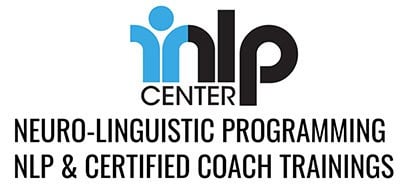It’s February 10th, four days before Valentine’s Day. My wife and I are meeting with Michael Grinder to plan our next online training module.
Michael is on our training team delivering NLP training to our Japanese students. This training had nothing to do with love languages but read what evolved.
At any rate, Michael was apologizing to my wife for being late delivering his module:
Michael: I apologize for being late, Jane. Do I need to buy you flowers even though I am not your Valentine?
Jane: Well, at least someone would be getting me flowers on Valentine’s Day, then!
Me: Huh? I’m not the one in trouble here!
Seriously, I wanted nothing to do with this action. Then, Michael piles on.
Michael: Well, John, if it helps, you should know that I bought my wife flowers on February 1st. I told her I love her so much I couldn’t wait until the 14th!
Thanks, Michael. That helps.
 Then I started thinking: Here’s a guy who knows how to make his wife feel loved. Let’s review the simple and very effective languages of love as clarified by the NLP VAK (visual-auditory-kinesthetic) model.
Then I started thinking: Here’s a guy who knows how to make his wife feel loved. Let’s review the simple and very effective languages of love as clarified by the NLP VAK (visual-auditory-kinesthetic) model.
There are three interpersonal communication modalities: visual, auditory and kinesthetic (seeing, hearing, feeling).
When you communicate love, you do so through one of these modalities. When you receive love, the same modalities apply.
NLP love languages have been around since the 1970’s, but have gotten little attention or credit when they have been borrowed. Here they are!
VAK communication styles for love:
Visual: Show your love. You communicate love by offering visual evidence. Buying flowers and gifts, dressing up and looking good, being well-groomed, providing a clean house, going on trips (seeing new places together) and so forth.
Auditory: Hear the love. You communicate your love through sound. You say it: I love you. You might enjoy romantic music, soft tones and engaging conversations to experience love.
Kinesthetic: Feel the love. Feel the love. You communicate love by way of physical touch. Hugs, snuggling, kissing, caressing, and physical closeness is evidence of love.
It really breaks down to something simple. We expect to receive love in the same modality that we give it. If your partner is not giving love the way you understand it, you won’t feel it.
Here are some examples of NLP love languages mismatching:
Rick: Visual
Martha: Auditory
Martha: I don’t feel like you love me anymore.
Rick: What do you mean? I do stuff for you all the time. We just got you a new car.
Martha: Yeah, but you never tell me you love me anymore.
Rick: I work my butt off so you can have everything you want. You are my life!
Martha: Then why can’t you just tell me you love me?
Rick is showing Martha he loves her (visual). Martha needs to hear it (auditory).
John: Kinesthetic (feeling)
Rhonda: Visual
Rhonda: How come you don’t notice me anymore?
John: Huh? I am all over you every chance I get.
Rhonda: Yeah, I know. I feel smothered. You never back off, but that’s just physical. Don’t you think I’m attractive?
John: You are irresistible! I can’t get enough of you. I always want to be close to you.
Rhonda wants to be seen (visual). John wants to connect physically (kinesthetic).
Sometimes relationships lack an effective point of connection, which can come from NLP love languages.
Take these simple steps to improve your love communication:
1. Understand your own love language by discovering what modality applies to you. Ask yourself, “The last time I experienced love, was it due to something I saw, heard or felt?” If you had to choose one of these, which would it be?
2. Ask your partner the same question!
3. Practice giving love in the modality that your partner prefers. Make sure your partner knows to give you love in the modality you prefer.
Understanding this information can help tremendously. If you understand it, but do not apply it, then there may be other issues you need to address.


